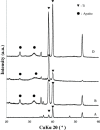Development of an early estimation method for predicting later osteogenic differentiation activity of rat mesenchymal stromal cells from their attachment areas
- PMID: 27877536
- PMCID: PMC5099769
- DOI: 10.1088/1468-6996/13/6/064209
Development of an early estimation method for predicting later osteogenic differentiation activity of rat mesenchymal stromal cells from their attachment areas
Abstract
Cell morphology has received considerable attention in recent years owing to its possible relationship with cell functions, including proliferation, differentiation, and migration. Recent evidence suggests that extracellular environments can also mediate cell functions, particularly cell adhesion. The aims of this study were to investigate the correlation between osteogenic differentiation activity and the morphology of rat mesenchymal stromal cells (MSCs), and to develop a method of estimating osteogenic differentiation capability of MSCs on biomaterials. We measured the attachment areas of MSCs on substrates with various types of surface after 2 h of seeding, and quantified the amount of osteocalcin secreted from MSCs after 3 weeks of culture under osteogenic differentiation conditions. MSCs with small attachment areas showed a high osteogenic differentiation activity. These findings indicate that cell attachment areas correlate well with the osteogenic differentiation activity of MSCs. They also suggest that the measurement of cell attachment areas is useful for estimating the osteogenic differentiation activity of MSCs and is a practical tool for applications of MSCs in regenerative medicine.
Keywords: apatite; cell morphology; mesenchymal stromal cells; osteogenic differentiation activity; proliferative activity; regenerative medicine; titanium.
Figures






Similar articles
-
Correlation between cell attachment areas after 2 h of culture and osteogenic differentiation activity of rat mesenchymal stem cells on hydroxyapatite substrates with various surface properties.Biochem Biophys Res Commun. 2013 Jan 4;430(1):156-60. doi: 10.1016/j.bbrc.2012.11.054. Epub 2012 Nov 27. Biochem Biophys Res Commun. 2013. PMID: 23194662
-
Cell attachment area of rat mesenchymal stem cells correlates with their osteogenic differentiation level on substrates without osteoconductive property.Biochem Biophys Res Commun. 2020 May 14;525(4):1081-1086. doi: 10.1016/j.bbrc.2020.03.013. Epub 2020 Mar 14. Biochem Biophys Res Commun. 2020. PMID: 32184016
-
Knockdown of SLC41A1 magnesium transporter promotes mineralization and attenuates magnesium inhibition during osteogenesis of mesenchymal stromal cells.Stem Cell Res Ther. 2017 Feb 21;8(1):39. doi: 10.1186/s13287-017-0497-2. Stem Cell Res Ther. 2017. PMID: 28222767 Free PMC article.
-
Mechanisms of Cdc42-mediated rat MSC differentiation on micro/nano-textured topography.Acta Biomater. 2017 Feb;49:235-246. doi: 10.1016/j.actbio.2016.11.057. Epub 2016 Nov 24. Acta Biomater. 2017. PMID: 27890731
-
Impact of developmental origin, niche mechanics and oxygen availability on osteogenic differentiation capacity of mesenchymal stem/stromal cells.Acta Biochim Pol. 2019 Dec 29;66(4):491-498. doi: 10.18388/abp.2019_2893. Acta Biochim Pol. 2019. PMID: 31883439 Review.
References
LinkOut - more resources
Full Text Sources
